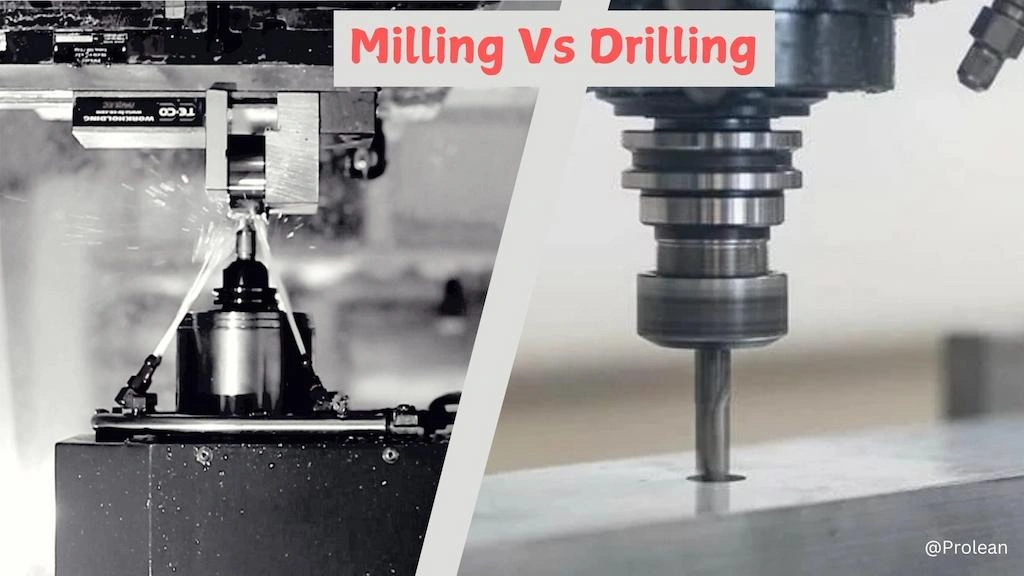
CNC machining is subtractive manufacturing that involves removing material by shear cutting until the designed shape is formed. It is used in almost every modern industry due to its versatility in machining processes, CNC drilling and CNC milling are two of them.
The main difference in milling vs drilling is the tool movement & material removal mechanism. Milling involves a rotating cutter in a spindle that can move multiple axes (X, Y, Z) for material removal and is suitable for complex 3D parts. In contrast, drilling bits are moved in the Z axis, penetrating works to create holes.
This article will present a comparative overview of two fundamental CNC machining processes— Milling Vs Drilling, including their working, pros, cons, and application preferences.
What is CNC Milling?
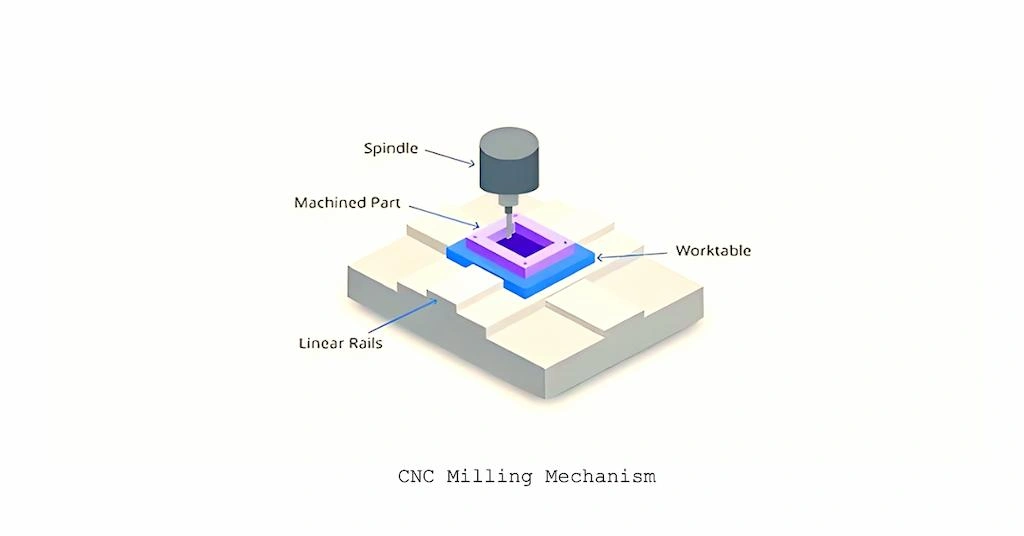
CNC Milling setup
Milling is a machining process in which a rotating cutting tool moves across multiple axes to remove material from a workpiece. It is primarily characterized by a “stationary work ( can rotate or tilt) and rotating cutter”. Except fly cutter, all others are multi-point tools.
What makes CNC milling special is the accurate tool movement: the CNC program commands the spindle motion, and it runs automatically.
The CAD/CAM integration is the main reason behind high accuracy and production speed. CAD creates a manufacturable design, and CAM transfers the design into instructions codes that the CNC milling machine can understand and act.
The CNC Milling Process
Any CNC milling machine operation involves the following four stages;
- CAD Desing/CAM: A detailed 2D and 3D model of the desired part is created, outlining all dimensions of all features and tolerances. Consequently, a CNC program(G and M codes) file is generated based on design.
- CNC Mill Setup: Setting up a milling machine involves clamping the workpiece in the vice and tool on the spindle.
- Milling Process: The workpiece and tool are positioned in reference coordinates (0,0,0), and based on CNC codes and other input variables, the spindle moves along axes (X, Y, Z) and the tool attached to it removes material from the work.
- Post-processing: After milling, parts are processed with deburring, grinding, bead blasting, or other finishes.
Advantages of CNC Milling
CNC Milling can follow complex paths, linear, circular, helical, irregular, and any other custom geometry possible. So, you can produce highly complex and custom shapes with milling operations.
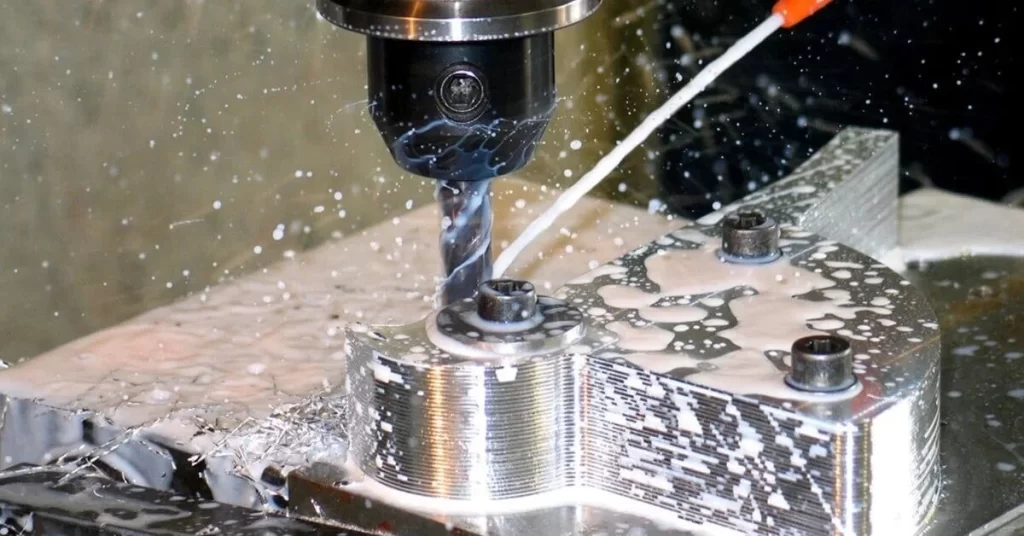
CNC milling machine in action
Other key advantages are as follows;
- Precision: Milling produces parts with tight tolerances, up to 0.127mm is easily achievable.
- Design Freedom: The capability to produce complex parts with intricate features allows designers to think out of the box.
- More than Hole Creation: CNC milling can also drill holes along with numerous other features and counters.
Disadvantages of CNC Milling
- High Installation Cost: CNC milling machines are expensive, often costing more than $ 100,000.
- Energy-intensive Process: Milling machines consume more energy than drilling presses, influencing the cost.
- Size Limitations: The size and capability of machines also restrict the size of workpieces that can be machined. So, it can limit milling applications.
Try Prolean Now!
What is CNC Drilling?
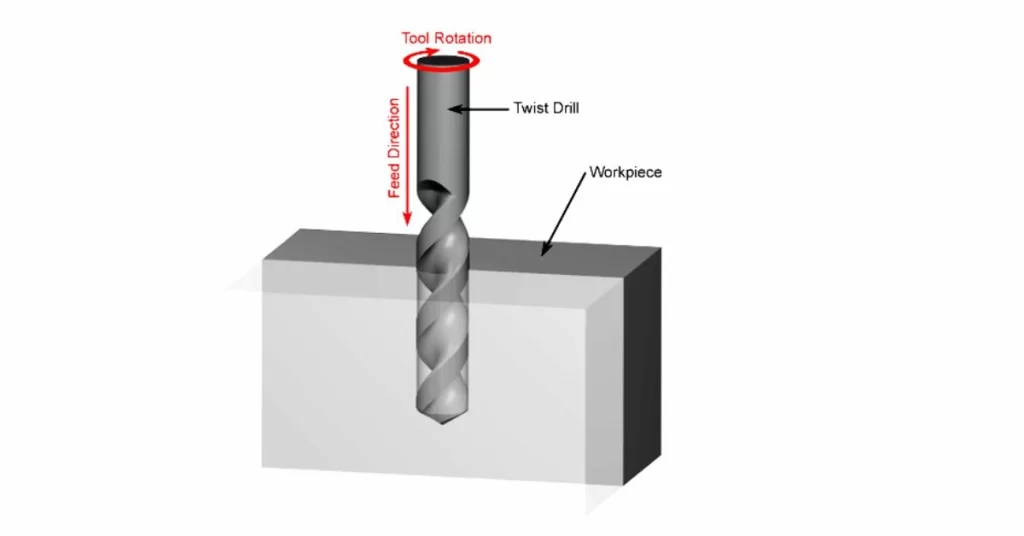
CNC drilling mechanism
CNC drilling is specialized for cylindrical hole creation, where rotating CNC drill bits feed the material and penetrate from the surface up to a pre-determined depth. The size of the hole depends on the drill bit diameter and length.
“ Mill vs drill press— Milling machines can also drill holes along with crafting other features by changing the tools, whereas drill press accommodates different drill bits and is used for holes only.”
CNC drilling can make blind, through, threaded, countersink, counterbore, and many more types of holes in metal, plastics, and composites.
The process of CNC Drilling is similar to milling. First, a CAD design is created, followed by G&M code generation and fitting drill bits in the spindle.
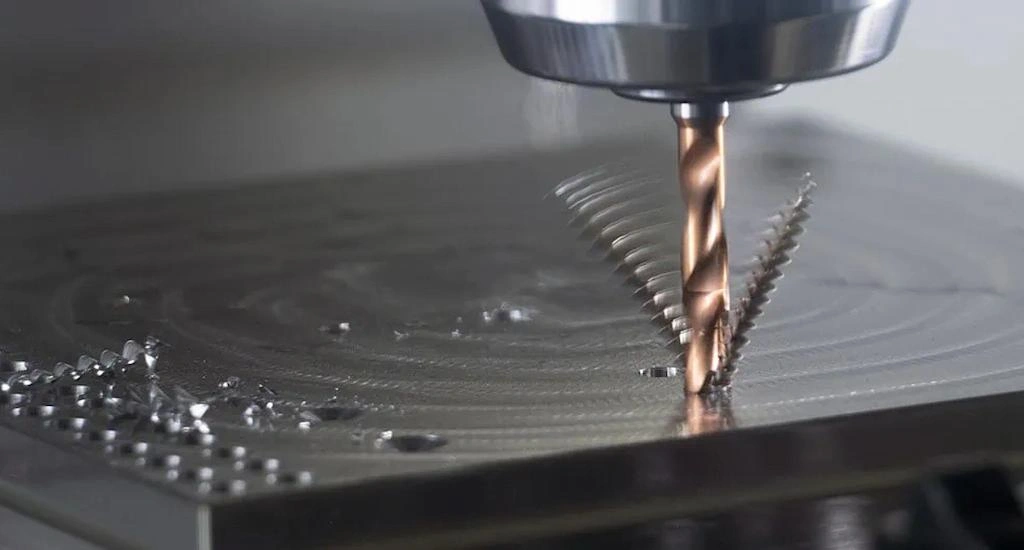
CNC drilling machine in action
The drill bit rotates, approaching the work surface in a perpendicular direction, and the cutting edges shear the material and form chips. The flutes of the drill bit guide the chips upward and away from the cutting zone.
Advantages of CNC Drilling
- Precise Hole Making: Compared to mill vs drill press, drill press only focuses on creating accurate holes and other related features, like grooving, pocketing, etc. Drilling machines can accommodate more diverse types and sizes of drill bits than milling.
- Cost-effectiveness: Although the exact cost depends on design and requirements, drilling is cost-effective, especially on large volumes. (You can read about drilling cost calculation here)
- Versatility in Hole size: It can produce holes of various shapes and sizes, from a few millimeters in diameter to up to 2600mm.
Disadvantages of CNC Drilling
- Material Wastage: Like Milling, it also produces material wastage.
- Limited to Hard Materials: It is challenging to drill holes in hard materials like tool steel and titanium alloys.
- Only Cylindrical Holes: The drilling machines or drills press are limited to cylindrical-shaped holes.
- Low precision than Milling: Although it has more types of hole drilling capabilities, drilling often lacks the precision that a milling machine provides.
Applications of CNC Drilling and Milling Operations
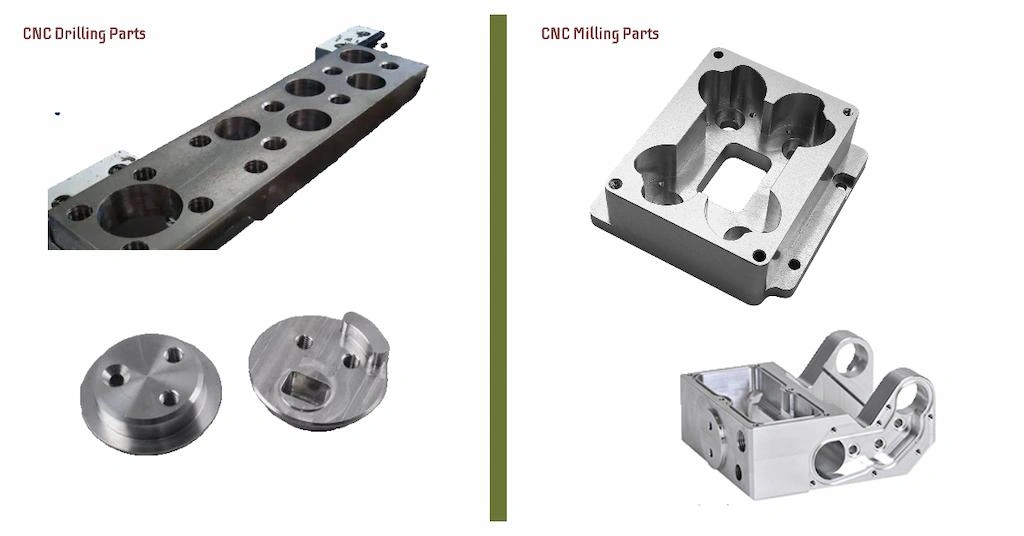
CNC Milling and drilling parts
Milling is used in complex and multi-feature parts across industries and is suitable for both prototyping and full production runs. The capability of accommodating diverse cutters/tools allows CNC machines to produce various metal and plastic parts.
On the other hand, drilling is applicable to make various shapes and sizes of holes in machined parts. If holes are in inaccessible areas for milling and other CNC processes, they are made with drilling. Eg, first you craft the surface profiles in the lathe and create holes in a drill press.
| Industry | CNC Drilling Applications | CNC Milling Applications |
| Aerospace | -Holes for fasteners, turbine cooling channels, and manifolds. | Complex surfaces, engine mounts, and avionics parts. |
| Automotive | Engine block holes, exhaust parts, suspension mounts. | Gearboxes, custom rims, interior panels. |
| Electronics | PCB holes, connector openings, heat sink patterns. | Enclosures, molds, connectors, adapters. |
| Medical Devices | Surgical tool holes, implant channels, dental bits. | Prosthetics, surgical template, diagnostic equipment |
| Jewelry | Bead holes, gemstone settings, watch parts. | Custom jewelry components |
| Marine | Shaft holes, hull openings, engine parts. | Parts for navigation systems, fittings, and boat interiors. |
| Oil & Gas | Pipe holes, valve openings, rig parts. | Pumps, flanges, exploration tools. |
Milling Vs Drilling: Compatible Materials
Most of the engineering materials are compatible with both drilling and milling, such as steel, aluminum, copper, ABS plastic, Acrylic, and composites. However, a drilling press handles ceramics and glasses better than milling machines. On the other hand, CNC mills are more suitable for drilling holes in supper alloys like nickel.
The table below outlines the compatibility of these two machining processes with various materials;
| Material | CNC Milling | CNC Drilling |
| Steel | ✅ | ✅ |
| Aluminum | ✅ | ✅ |
| Titanium | ✅ | ✅ |
| ABS | ✅ | ✅ |
| PEEK | ✅ | ✅ |
| Nylon | ✅ | ✅ |
| Composites | ✅ | ✅ |
| Hardened Ceramics | ❌ | ✅ |
| Glass | ❌ | ✅ |
| Inconel | ✅ | ❌ |
| Tungsten Alloys | ✅ | ❌ |
| Tool Steel | ✅ | ✅ |
Milling Vs Drilling: Design Complexity
cnc milling machine operations can create more intricate geometries, including complex contours, multi-dimensional shapes, and intricate features. On the other hand, drilling is limited to cylindrical holes along a single axis. Drilling operations are only favorable for straightforward hole-making designs.
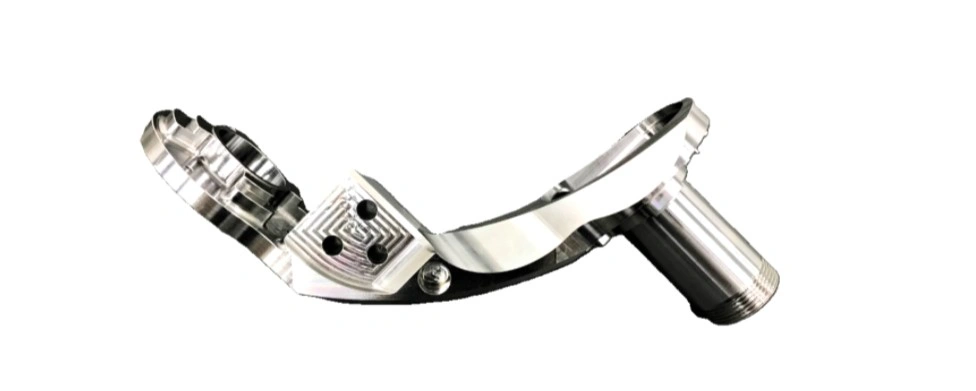
Complex CNC milled part
So, milling outperforms drilling in design complexity, providing the capability of multiple geometrical features more than just holes.
Try Prolean Now!
Milling Vs Drilling: Machine Setup and Tooling
Let’s look at how milling differs from drilling in terms of their work claiming, tool setup mechanisms, and machining variables.
Work Clamping
- CNC Milling: Workpiece is securely held by vices, clamps, or jigs. Often, re-clamping is needed to machine different sides of work. Next, stability is key as work needs to withstand complex cutting forces.
- CNC Drilling: As it is a single-axis operation, standard vises are sufficient to clamp the work on the bench. Drilling requires less clamping force than milling.
Speed and Cutting Depth
Spindle speed in milling operations is less than in the drilling, drill bits rotate faster (6000 to 2400 RPM). The reason is that a single-axis operation of drilling allows for faster speed, whereas the milling cutters need to move in complex paths.
Cutting depth in drilling depends on factors like material type and drill bit size, whereas milling depth can be more versatile based on cutter type, size, geometry, and machinability of work.
Machining Tools
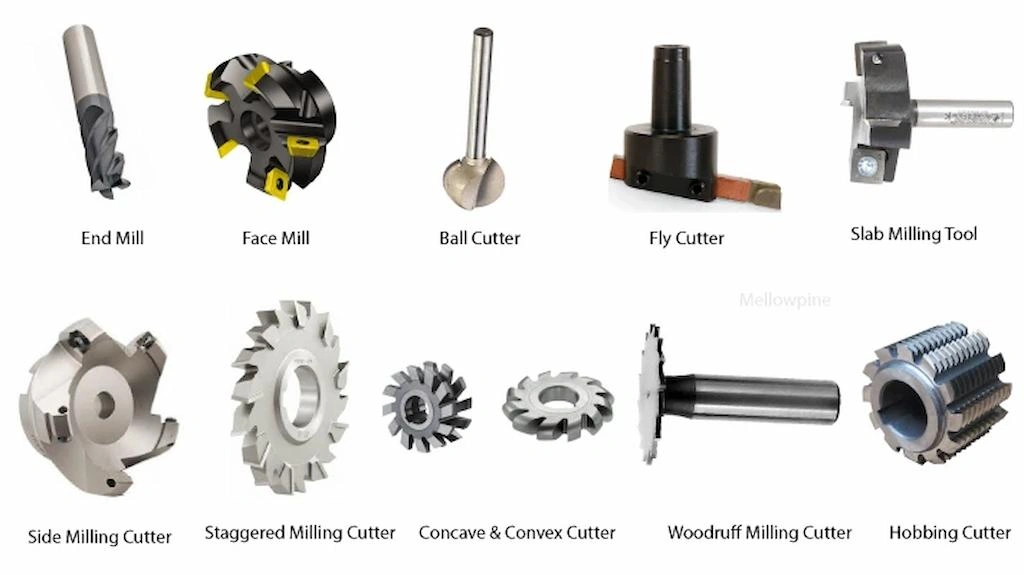
CNC milling tools
CNC milling uses different multi-point cutters, and edges on the end, side, or both locations. They can cut the material from multiple directions to shape the work. End mill cutters are the most popular milling tools. Carbide, High-Speed Steel(HSS), Superalloys, or other hard materials are used to make these cutters.
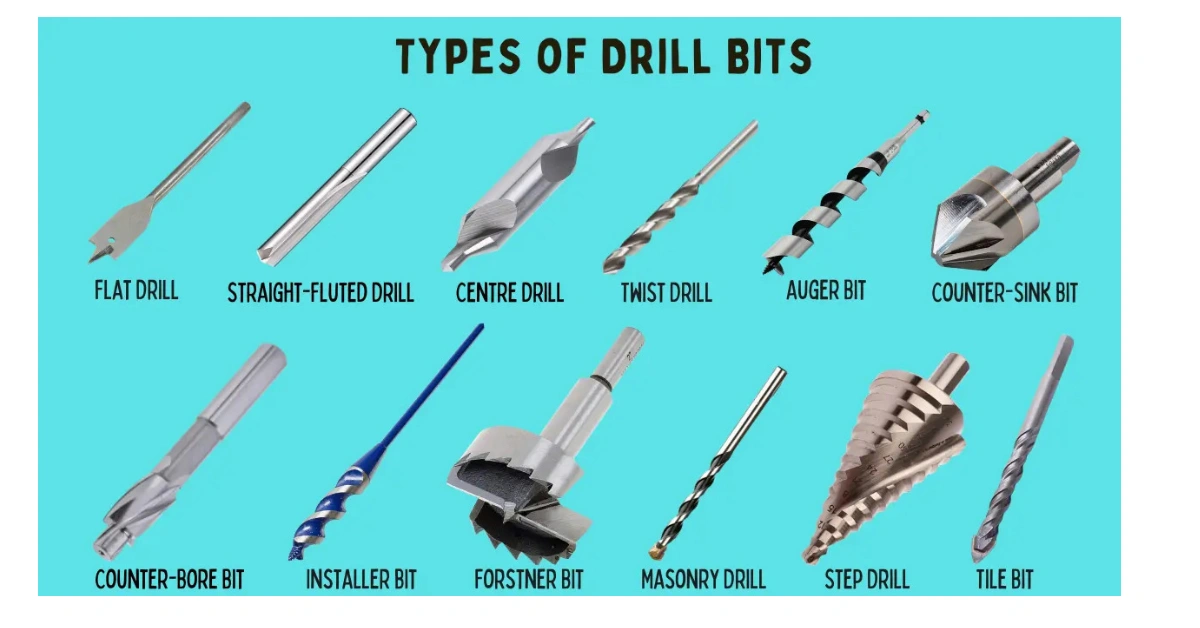 Types of drill bits
Types of drill bits
Drill bits are the primary tools in drilling operations, made with tungsten carbide, HSS, or even diamond coating sometimes. Drill bits with sizes of 0.05 to 38 mm are most common in CNC drilling practices.
| Types of Milling Tools | Types of Drilling Tools |
| End Mill | Twist Drill Bit |
| Face Mill | Masonry Drill Bit |
| Ball Nose Cutter | Dowel Drill Bit |
| Slab Mill | Flat Drill Bit |
| Side-and-Face Cutter | Auger Drill Bit |
| Involute Gear Cutter | Spade Drill Bit |
| Fly Cutter | Step Drill Bit |
| Hollow Mill | Countersink Drill Bit |
| Shell Mill | Core Drill Bit |
| Roughing End Mill | Center Drill Bit |
| Dovetail Cutter | |
| Woodruff Cutter |
Milling Vs Drilling: Precision and Surface Finish
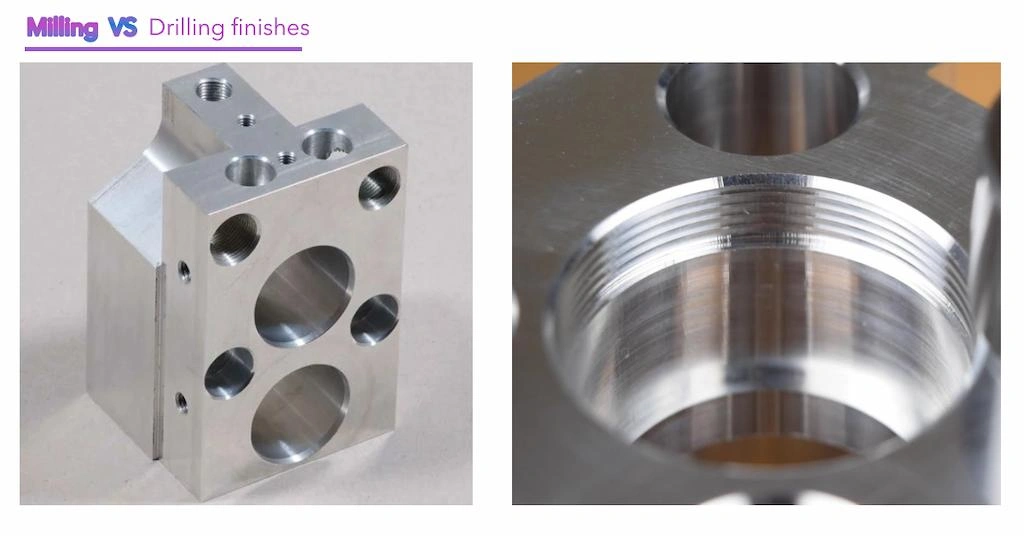
Milling vs drilling finish
CNC milling machines are capable of achieving tolerances as tight as ±0.01 mm to ±0.05 mm. However, the advanced multi-axis machines can provide tolerance down to ±0.005 mm under optimal machining conditions. On the other hand, the drilling tolerance range is ±0.05 mm to ±0.1 mm, which can be ±0.02 mm with reaming.
CNC-milled surfaces are smoother than drilled holes. The diverse tooling options and the machine’s flexibility help to maintain surface roughness(Ra) as low as 1.6 µm. On the other hand, the achievable roughness of the drilled hole is 3.48 µm.
The above tolerance and roughness (Ra) values are for standard machining conditions. These can vary on material type, tooling, and even operator expertise.
Which Method Should I Choose for Hole Making? Drilling or Milling
We have discussed that milling is suitable if the design has multiple features, but what if you want to drill only holes with a milling machine? Yes, you can perform drilling operations in the milling machine.
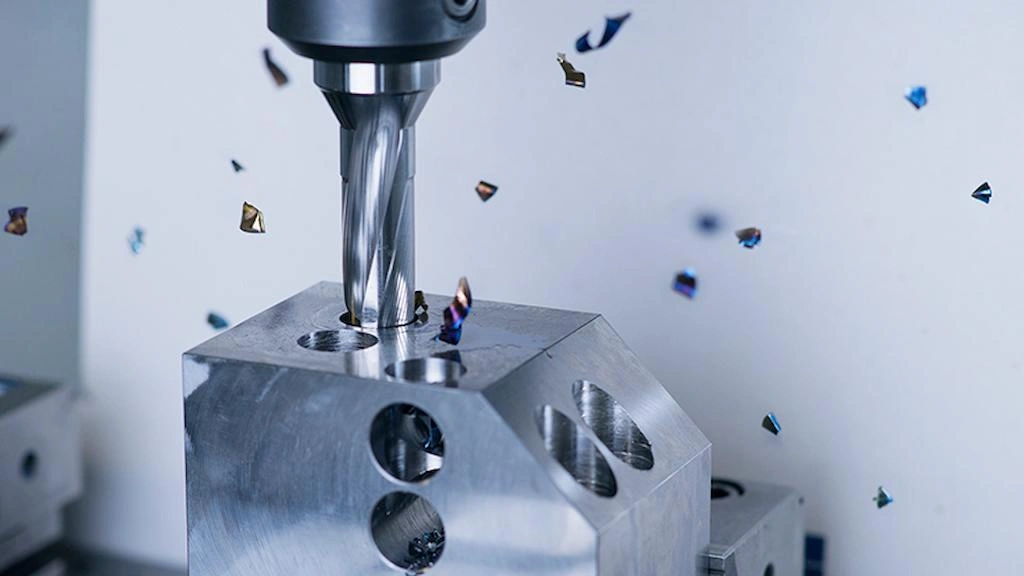
Hole making process
Which one you should choose mainly depends on whether your design has deep and standard holes or complex hole geometry. A CNC drilling machine is best for making standard cylindrical holes at high speed and low cost. Using a milling machine for hole creation is best if the hole is complex and custom-sized.
Try Prolean Now!
Summing Up
Drilling and Milling both have different application preferences; milling is suited for intricate machining details and drilling is dedicated to engineering holes. Although the CNC program controls the tool movement in both machining processes, their tooling and setup are also slightly different. Understanding these differences helps to decide which one is best for you and how quality parts can be made with optimal budgeting.
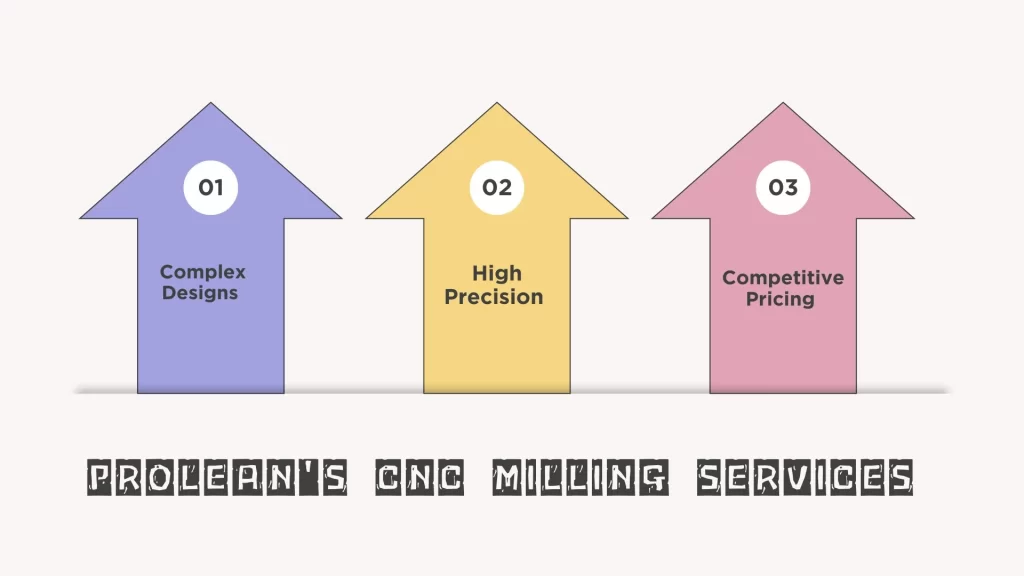
At ProleanTech, we provide precise yet affordable cnc milling service for a range of industries, including automotive, electronics, robotics, medical, and machine hardware. Our more than a decade of experience in CNC manufacturing can be beneficial for your projects. We can supply machined parts for your door according to your design specifications.
FAQs
How does milling differ from the drilling process?
The CNC milling machine operations use rotating cutting tools that can move across X, Y, and Z directions, whereas drilling involves CNC drill bits, which linearly move along the workpiece’s axis to create a hole.
What is the difference between hole milling and drilling?
Drill bits move perpendicular to the work surface to produce deep and straight holes. On the other hand, a rotating cutter removes material in a circular path during the hole milling process. Hole milling can create large and custom-shaped holes.
What are the different CNC milling machine operations?
Some common milling operations are Face Milling, Peripheral Milling, Slot Milling, Drilling, and Tapping.
Are drilling bits the same as milling bits?
These are different types of CNC tools designed for distinct machining purposes and are not interchangeable. Typically, end mills are known as mill bits, which can cut material in multiple directions. In contrast, the drill bit contains a pointed tip that penetrates the material to drill holes.

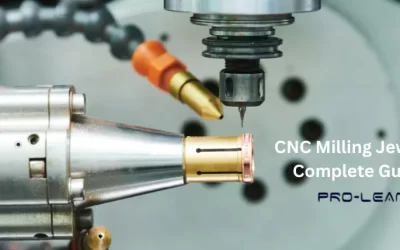
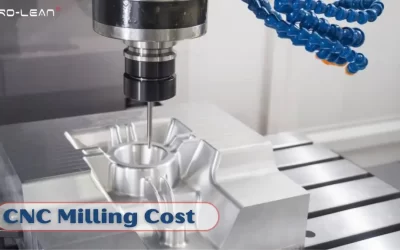
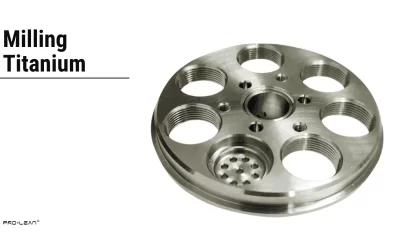
0 Comments